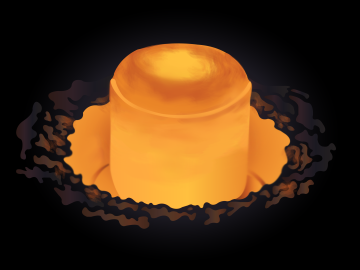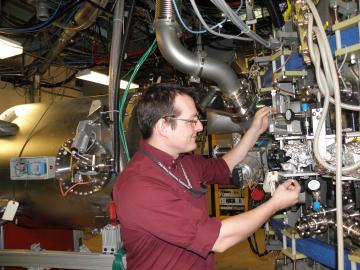
Filter News
Area of Research
- Advanced Manufacturing (5)
- Biological Systems (1)
- Biology and Environment (92)
- Computational Biology (2)
- Computational Engineering (2)
- Computer Science (7)
- Energy Science (45)
- Fuel Cycle Science and Technology (1)
- Fusion and Fission (29)
- Fusion Energy (12)
- Isotope Development and Production (1)
- Isotopes (9)
- Materials (80)
- Materials for Computing (12)
- National Security (24)
- Neutron Science (123)
- Nuclear Science and Technology (38)
- Nuclear Systems Modeling, Simulation and Validation (2)
- Quantum information Science (8)
- Supercomputing (72)
News Type
News Topics
- (-) Advanced Reactors (37)
- (-) Biology (126)
- (-) Biomedical (70)
- (-) Machine Learning (64)
- (-) Mercury (12)
- (-) Microscopy (51)
- (-) Neutron Science (163)
- (-) Nuclear Energy (113)
- (-) Quantum Science (89)
- 3-D Printing/Advanced Manufacturing (137)
- Artificial Intelligence (127)
- Big Data (70)
- Bioenergy (109)
- Biotechnology (38)
- Buildings (65)
- Chemical Sciences (83)
- Clean Water (32)
- Composites (33)
- Computer Science (216)
- Coronavirus (47)
- Critical Materials (28)
- Cybersecurity (34)
- Education (5)
- Element Discovery (1)
- Emergency (4)
- Energy Storage (107)
- Environment (202)
- Exascale Computing (65)
- Fossil Energy (8)
- Frontier (61)
- Fusion (63)
- Grid (70)
- High-Performance Computing (125)
- Hydropower (12)
- Irradiation (2)
- Isotopes (58)
- ITER (9)
- Materials (147)
- Materials Science (145)
- Mathematics (11)
- Microelectronics (4)
- Molten Salt (10)
- Nanotechnology (58)
- National Security (81)
- Partnerships (68)
- Physics (64)
- Polymers (31)
- Quantum Computing (52)
- Security (29)
- Simulation (61)
- Software (1)
- Space Exploration (26)
- Statistics (4)
- Summit (70)
- Transportation (92)
Media Contacts

Combining expertise in physics, applied math and computing, Oak Ridge National Laboratory scientists are expanding the possibilities for simulating electromagnetic fields that underpin phenomena in materials design and telecommunications.

The 75th anniversary of the final voyage of the USS Indianapolis and her brave crew is Thursday, July 30. The US Navy warship was on a top-secret mission across the Pacific Ocean to deliver war materials that marked the conclusion of the Manhattan Project.

After its long journey to Mars beginning this summer, NASA’s Perseverance rover will be powered across the planet’s surface in part by plutonium produced at the Department of Energy’s Oak Ridge National Laboratory.

Lithium, the silvery metal that powers smart phones and helps treat bipolar disorders, could also play a significant role in the worldwide effort to harvest on Earth the safe, clean and virtually limitless fusion energy that powers the sun and stars.

A team led by Dan Jacobson of Oak Ridge National Laboratory used the Summit supercomputer at ORNL to analyze genes from cells in the lung fluid of nine COVID-19 patients compared with 40 control patients.

From materials science and earth system modeling to quantum information science and cybersecurity, experts in many fields run simulations and conduct experiments to collect the abundance of data necessary for scientific progress.

Five researchers at the Department of Energy’s Oak Ridge National Laboratory have been named ORNL Corporate Fellows in recognition of significant career accomplishments and continued leadership in their scientific fields.

Scientists at ORNL used neutron scattering and supercomputing to better understand how an organic solvent and water work together to break down plant biomass, creating a pathway to significantly improve the production of renewable

Researchers at Oak Ridge National Laboratory developed a method that uses machine learning to predict seasonal fire risk in Africa, where half of the world’s wildfire-related carbon emissions originate.

Oak Ridge National Laboratory researchers have built a novel microscope that provides a “chemical lens” for viewing biological systems including cell membranes and biofilms.


